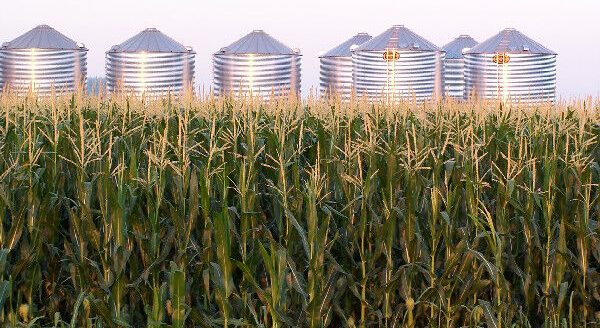Deadline quickly approaches for growers
Farmers and ranchers have about three weeks to lock in one financial tool that can assist them in stabilizing their bottom line over the next five years.
In recent weeks, Kansas State University and Oklahoma State University Extension professionals have been adding the latest information on estimated prices for wheat, corn, soybeans and sorghum on Ag Risk Coverage and Price Loss Coverage programs for 2019-20 and 2020-21. During a Feb. 13 update at the Ford County Fair Building, Dodge City, Kansas, an update was provided by the county’s Extension office in partnership with the Farm Service Agency and Natural Resources Conservation Service.
Andrea Burns, Ford County Extension agricultural and natural resources agent, said while producers attended an update about six months ago it came at time when key pricing information was unavailable. That information is now available and can help them as they now face an enrollment deadline of March 16. Producers need to analyze those projected market prices, she said.
Enrollment is being conducted at FSA offices. Growers have to make their own decisions on how to use ARC and PLC programs for their operations, she said.
“No one size fits all,” she said.
C.Z. Thompson, acting county executive director of the FSA office in Ford County, urged producers to not wait until the deadline because the rush can and likely will stress the government’s computer system.
“I encourage you to make a decision. Right or wrong, make a decision and get it signed,” Thompson said.
PLC is a price protection tool and ARC is a revenue protection program.
The provisions in the latest farm bill offer more flexibility than the 2014 bill, which locked producers into an enrollment plan for five years. After enrolling it will cover the first two years then growers can make changes on an annual basis. Thompson and Burns said that is an important change.
“Make an appointment with FSA right away,” Burns said. “Don’t wait until the last minute.”
If a grower fails to be enroll by the deadline date he will automatically by default be re-enrolled in the 2014 program but most significantly would not receive a coverage payment in October 2020 for the year 2019.
Roots of the bill date back to early 2018 and ultimately a comprehensive bill was passed by Congress and signed by President Donald Trump in December 2018. The farm bill has an $867 billion projected cost over a five-year period. The biggest component of the farm bill, which Burns said was a “status quo” in many ways to the 2014 legislation because of nutrition programs and provisions for crop insurance, also added cottonseed and called for additional acres that could be enrolled into the Conservation Reserve Program.
Congress, when it wrote the bill, took into account how farm income has dramatically dropped since 2014.
“There were good years through 2014 but it has been tough years since,” Burns said.
Growers could only enroll once for the 2014 bill, and producers criticized Congress for restricting their ability to make a change to address market changes. Producers can now make four decisions in five years, and if they get enrolled in time they can make a change as early as 2021.
Key terminology
Marketing Year Average prices are used to determine payments for both programs. MYA prices are national prices determined by the U.S. Department of Agriculture and are based on monthly prices received by farmers throughout a marketing year weighted by the monthly sales for the commodity, according to Rich Llewelyn, an Extension assistant in the Department of Agricultural Economics at K-State.
The marketing year differs for wheat, relative to corn, soybeans and grain sorghum. The marketing year for wheat is June 1 to May 31 while the marketing year for summer crops is Sept. 1 to Aug. 31.
Under PLC, a payment is issued if the MYA price falls below the effective price of a covered commodity and is less than the respective reference price for that commodity, according to AgManager.info. The payment is calculated by taking the difference in the MYA price and the effective reference price, multiplied by the farm’s program billed then multiplied by 85% of base acreage in that commodity.
ARC is often termed as ARC-CO, which stands for ARC-County. The program provides income support tied to historical base acres, not current production of current commodities, according to USDA. Payments are issued when the actual county crop revenue of a covered commodity is less than the ARC-County guarantee for the covered commodity.
ARC-County payments will be based on the physical location of the farm and not the administrative county, which Burns said was a change many growers were glad to see incorporated in the 2018 legislation.
In evaluating the program, Burns said it appears the 2018 bill does a better job of taking into account when farmers have a poor production year so they are not penalized as severely.
For updating an FSA program yield in 2020, a producer can replace a year of poor yields with 75% of the county average in 2013-2017 before taking the five-year average, which should help reduce the impact of low-yielding years from drought or other factors.
Burns said there are several websites producers that are helpful including:
-
AgManager.info;
-
www.fapri.missouri.edu
-
www.ers.usda.gov/data-products/season-average-price-forecasts; and
-
www.farmdoc.illinois.edu.
Thompson and Dennis Wieberg, acting district conservationist for Ford County NRCS, also reviewed other programs. They noted the deadline for CRP signup is Feb. 28. Congress has approved the expansion of an additional 5 million acres, which means 27 million acres can be enrolled into the program.
Dave Bergmeier can be reached at 620-227-1822 or [email protected].



